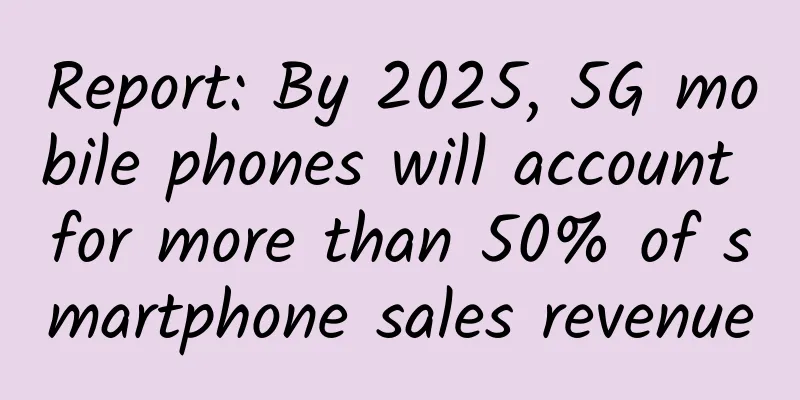Report: By 2025, 5G mobile phones will account for more than 50% of smartphone sales revenue

|
A new study by Juniper Research found that by 2025, 5G-compatible smartphones will account for more than 50% of smartphone sales revenue , up from $108 billion in 2021 to $337 billion. This will urge mobile phone manufacturers to ensure that hardware maximizes the benefits of future mobile cloud computing solutions. Mobile cloud computing enables service providers to move intensive tasks to the cloud, freeing up on-device resources for necessary device processes. The new study, titled "5G Smartphones: Trends, Regional Analysis and Market Forecasts (2021-2026)", predicts that successful mobile phone manufacturers will have wireless technologies that can handle large bandwidths and ultra-low latency to ensure that mobile phone users can effectively use cloud computing services while maintaining competitive prices. Android OS phones will dominate emerging marketsThe report predicts that increasing the availability of low-end 5G smartphones will be crucial to promoting 5G phones in emerging markets. It predicts that by 2025, global Android smartphone prices will be 65% lower than global iOS smartphone prices . It also emphasizes that the lower average cost of Android devices will lead to Android dominating the 5G mobile phone market in regions such as Latin America. Instead, the study predicts that by 2025, the continued popularity of iOS devices in developed markets will result in 40% of global 5G smartphone revenue coming from North America and Europe. “Right to Repair” Regulations Affecting ShipmentsThe report warned that long-term 5G smartphone shipment revenue will be limited by upcoming "right to repair" legislation in North America and Europe as more mobile phone users choose to repair older phones rather than upgrade to newer generation devices. Report author Adam Wears explained: “The impact of these regulations will not be felt initially as consumers adopt 5G smartphones to take advantage of the high speeds and reduced latency of 5G networks. Hardware vendors must use this opportunity to build new device features to encourage consumers to continue to upgrade regularly and avoid defecting to competitors.” |
<<: How edge computing, edge networking, and edge data management work together
>>: Google and Facebook to build new submarine cable connecting Japan and Southeast Asia in 2024
Recommend
OneTechCloud: 20% off on all VPS monthly payments starting from 22 yuan/month, Hong Kong CN2&CMI/US CN2 GIA&9929/High Defense optional
OneTechCloud (Yikeyun) offers a 20% discount code...
How to test your network with PerfSONAR?
[51CTO.com quick translation] PerfSONAR (https://...
The Dilemma and Hope of SRv6
Operators have been fighting "pipelining&quo...
Come to Fuzhou on March 21 to experience Huawei's "immersive experience" Smart Island!
[51CTO.com original article] Speaking of "im...
Implementing a REST API server with caching in Go
1. REST API principles REST (Representational Sta...
Building 5G and expanding 4G: 2G/3G network withdrawal is in progress around the world
The COVID-19 pandemic has driven the demand for d...
Cloud empowers new life and Wind River IoT genes are upgraded again
There is a wind power plant abroad that mainly us...
2G will be completely withdrawn from the network next year, and there are still 273 million people who have not migrated. The general trend is inevitable.
2G will be completely withdrawn from the network ...
SoftShellWeb December Special Package, Netherlands/San Jose/Taiwan VPS monthly payment of $9.99
SoftShellWeb has released a special package for D...
Kuroit: £5/month-dual-core/4GB/50G NVMe/3TB/Singapore & Los Angeles data centers
Kuroit is offering a special promotion for VPS in...
[6.18] V5.NET 20% off monthly payment for all independent servers, 30% off for specific models in Tsuen Wan, Hong Kong
V5.NET has launched this year's 618 promotion...
A national expert group visited Tiantan Hospital to discuss the smart transformation of hospitals in the digital era
On August 27, the "Entering Tiantan - Smart ...
Why are there IPv4 and IPv6, but no IPv5? What is IPv10?
As the country vigorously promotes the developmen...
The Smart Network: Cisco's most disruptive innovation in a decade
A little over a year ago, my colleague David McGr...
MoeCloud New Year Promotion: San Jose CN2 GIA monthly payment 15% off, annual payment 30% off
MoeCloud has launched a Spring Festival promotion...



![[5.1] Megalayer limited time sale, E3-1230/8G US & Hong Kong server starting from 199 yuan/month](/upload/images/67cabed77271f.webp)





